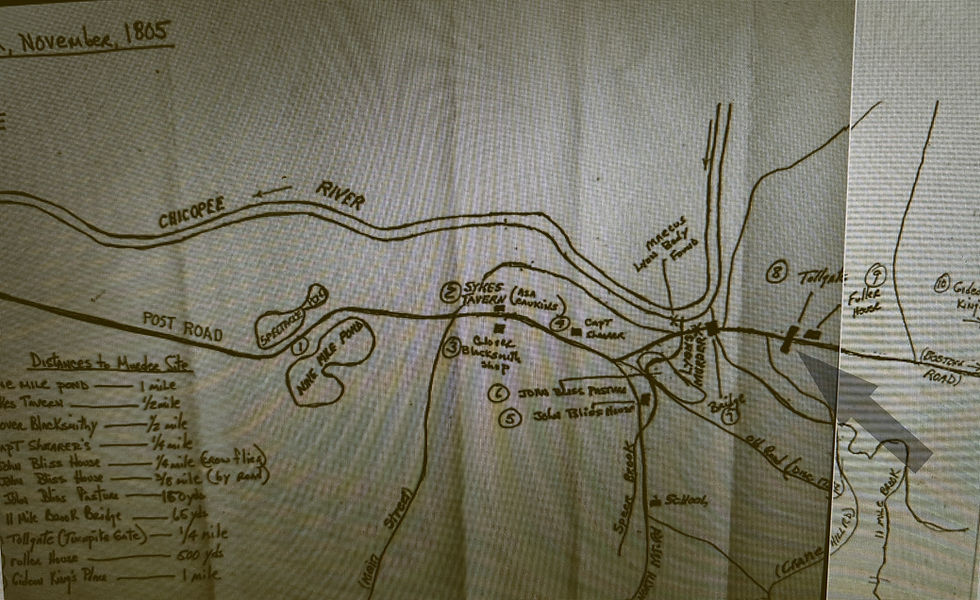The Wilbraham Aqueduct Company
- David Bourcier
- Sep 29, 2023
- 3 min read
Updated: 3 days ago
In the January session of 1796, the Senate and House of Representatives in the General Court assembled and granted the act to incorporate a company by the name of Aqueduct in Wilbraham. The grantees were Samuel Fisk Merrick, Gideon Burt, Jonathan Merrick, Solomon Warriner, Jason Chapin, Joel Lyman, James Hammon, Moses Warriner Junr, Moses Burt, William Brewer, Nathan Ainsworth, John Adams, Augustus Sisson, all of Wilbraham in the County of Hampshire. The purpose of this venture was to convey water by pipes into parts of the said Town of Wilbraham, as they may judge. Most likely, the parts of town would have been along the West Road (Main Street). Many, if not all, of these men lived on the West Road.
It was further enacted that the said proprietors above are hereby authorized to enter on and dig up any highway or town road to place such pipes as may be necessary to complete said Aqueduct, or to repair the same when required. In no such way shall the proprietors obstruct the passing of such individuals, as may have occasion to use such road or highway. There is no further history mentioned about this venture ever coming to fruition.
Sometime in 1854 or 1855, a stock company was formed here in town for the same purpose of supplying water, but to the center village. A reservoir was constructed from a small brook on the west side of Main Street, and about halfway up the mountain on the south side of Mountain Road.

The aqueduct was made from pine logs and was laid toward Main Street and covering about a half mile of Main Street. A long auger, run by steam power, burrowed a hole lengthwise through those logs. The boring was done in a lot on the east side of Main Street, directly in front of the south end of Wilbraham Academy's Rich Hall. The specifications for the logs required them to be eight inches in diameter at the small end. They bored a hole four inches in diameter through each log, leaving only about two inches of sappy green wood around the hole.
When the project was completed, the water was turned on, and the logs began to burst before the water could get down into the village. The broken places in the aqueduct were repaired, and the water kept running for a few years.
The following is a copy of an assessment made upon the stockholders, found among the papers left by William W. Merrick.
"Wilbraham, June 16th, 1856."
"To William W. Merrick Esq. Treasurer of the Wilbraham Aqueduct Company."
"Sir. The Board of Directors of the Company has directed that an installment of six dollars on each share of the capital stock of said Company be required to be paid into the hands of the Treasurer at the expiration of ten days from the 28th day of May last past. In accordance with this resolution, I have placed in the hands of Hiram M. Brewer, Collector of the Company, the Subjoined bills. It is the wish of the directors that you use all due diligence to cause the same to be collected and paid into your hands and made subject to the drafts of the Secretary and Auditor."
After those first few years of being in business, the waterworks system was abandoned due to the expense of repairs. The reservoir and the land around it were later sold to Wilbraham Academy in 1878. Around that same time, the academy pushed iron pipes through the auger holes in the old logs to supply water to their boarding house, Rich Hall. Years later, a larger cast-iron pipe was laid on Main Street to supply water for fire protection. This would include a building sprinkler system for Rich Hall and yard hydrants.







Comments